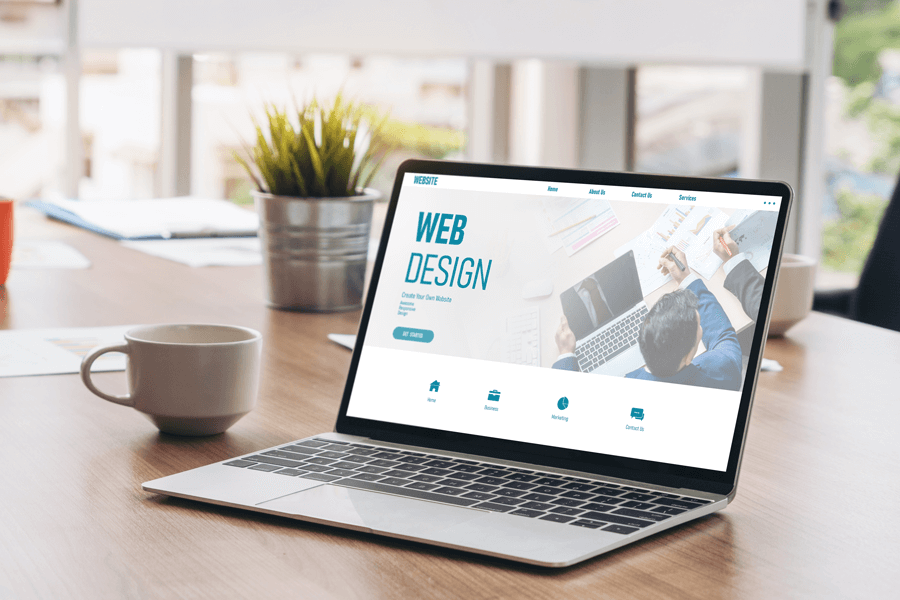The Role of Color, Typography, and Imagery in Web Design
In the world of web design, creating an impactful and engaging user experience is paramount. As the digital landscape evolves, the importance of visual elements such as color, typography, and imagery cannot be overstated. These three components work together to establish a website's identity, influence user behavior, and enhance overall usability. In this article, we will explore the pivotal roles that color, typography, and imagery play in web design and how they can be effectively utilised to create compelling websites.
The Power of Color in Web Design
Color is one of the most influential elements in web design. It has the power to evoke emotions, convey messages, and influence perceptions. Here are key considerations for using color effectively:
- Brand Identity and Recognition: Color schemes should align with the brand's identity. Consistent use of brand colors helps in creating a strong brand recall. For instance, the use of blue by tech companies like Facebook and Twitter conveys trust and professionalism.
- Emotional Impact: Different colors evoke different emotions. Warm colors like red and orange can create a sense of urgency, while cool colors like blue and green promote calmness and serenity. Understanding the psychology of colors can help in designing interfaces that resonate emotionally with the target audience.
- Readability and Accessibility: Choosing the right contrast between background and text colors ensures readability. This is crucial for user engagement and retention. Accessible color combinations are essential for users with visual impairments. Tools like color contrast checkers can help in selecting compliant color schemes.
- Guiding User Behavior: Colors can be used strategically to guide user behavior. For example, a bright color for a call-to-action button can draw attention and increase click-through rates.
Typography: The Voice of Your Website
Typography goes beyond mere text presentation; it is the voice of your website. Good typography enhances readability, establishes hierarchy, and reinforces the brand's personality.
- Readability and Legibility: Choose fonts that are easy to read across different devices and screen sizes. You can use https://fonts.google.com/ Sans-serif fonts are often preferred for web use due to their clarity. Appropriate font size and line spacing improve readability and prevent user fatigue.
- Hierarchy and Structure: Typography helps in creating a clear visual hierarchy. Using different font sizes, weights, and styles can distinguish headings, subheadings, and body text. This hierarchical structure guides users through the content, making it easier to digest information.
- Consistency and Branding: Consistent use of typography enhances the overall aesthetics and user experience. It also strengthens brand identity. Custom fonts can add a unique touch to the website, but should be used judiciously to maintain performance and readability.
- Emotional Tone and Personality: Different fonts convey different tones and personalities. For example, a serif font might convey tradition and reliability, while a modern sans-serif font could suggest innovation and simplicity. The choice of typography should align with the brand’s message and target audience.
Imagery: The Visual Storyteller
Imagery is a powerful tool in web design, capable of conveying complex messages quickly and effectively. High-quality images can significantly enhance user engagement and retention.
- Visual Appeal and Engagement: Striking images capture attention and make the website more appealing. They can create an emotional connection with the users, making the content more memorable. Original and high-resolution images contribute to a professional and polished look.
- Communication and Storytelling: Images can tell a story more effectively than words alone. They can illustrate concepts, evoke emotions, and provide context. Infographics and illustrations can simplify complex information, making it easier for users to understand.
- Reinforcing Brand Identity: Consistent use of imagery that aligns with the brand’s style and message reinforces brand identity. Using a cohesive visual style across all images helps in creating a unified look and feel.
- Improving Usability: Images can enhance usability by providing visual cues and guiding users through the website. For instance, icons can simplify navigation, and product images can aid in decision-making. Alt text for images improves accessibility, ensuring that visually impaired users can understand the content through screen readers.
Conclusion
Incorporating color, typography, and imagery thoughtfully into web design is crucial for creating visually appealing and user-friendly websites. Each element plays a distinct role but works harmoniously to enhance user experience, convey the brand message, and drive engagement. By understanding and applying these elements effectively, designers can craft websites that not only look stunning but also function seamlessly, ultimately leading to higher user satisfaction and better business outcomes.
At Webie.ie, we specialise in crafting bespoke websites that leverage the power of color, typography, and imagery to create exceptional digital experiences. Contact us today to transform your online presence with expert web design.
Illustration image: Visual Generation - stock.adobe.com


